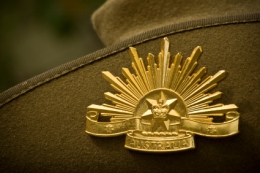17 April 2012
 Media coverage of Anzac Day is set to improve following the release of a media style guide written by UniSA researcher Sharon Mascall-Dare.
Media coverage of Anzac Day is set to improve following the release of a media style guide written by UniSA researcher Sharon Mascall-Dare.
The Anzac Day Style Guide provides journalists with a concise history of Anzac Day, as well as advice on identifying new story angles and avoiding overused clichés, words and phrases.
Backed by an editorial advisory board that brings together academia and industry, and draws on expertise from UniSA's Narratives of War Research Group, the publication aims to be an objective resource for journalists throughout Australia.
As a working journalist who has previously written style guides for the BBC and the ABC, Mascall-Dare says the idea for the Anzac Day guide goes back to her attendance at an Anzac Day dawn service in 2007.
“I started to think about the important role journalists have in defining and describing the Anzac narrative. I became fascinated by the pivotal role played by the media in portraying Anzac Day,” she said.
Interviewing a range of reporters, broadcasters and commentators across Australia, Mascall-Dare found that journalists were struggling to find new angles and were worried about making mistakes.
“Younger journalists were telling me they felt under-resourced and newspapers were trying to do too much with no time or money,” Mascall-Dare said.
“Because they were terrified of getting it wrong, some journalists were resorting to copy and paste by lifting coverage from previous years, recycling and repeating clichés.
“During my research, many journalists have shared their concerns about Anzac Day coverage: the same terminology trotted out time and time again with no clarification, definition or thought.”
Collaborating with UniSA and Monash University, Mascall-Dare developed the Anzac Day Media Style Guide in time for this year’s Anzac Day. The guide will also be expanded over the next two years, in response to feedback from industry, to help journalists prepare for the Anzac Day centenary in 2015.
“It is a truly collaborative venture, drawing on expertise from UniSA's Narratives of War Research Group, Monash University and journalists working out in industry.
“It’s important that the story is right particularly with the centenary coming up. Having a guide will help journalists to ensure that the story is responsible, ethical, accurate, fair, and does the job it needs to do.”
Media contact
- Daniel Hamilton office (08) 8302 0578




